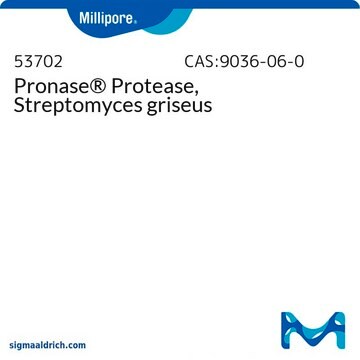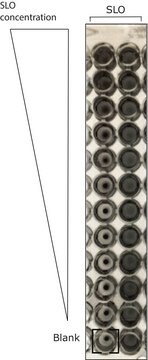SAE0202
Mucinase StcE
mass spec suitable, from EHEC, recombinant, powder
Synonym(s):
Mucin-specific protease StcE, secreted protease of C1 esterase inhibitor
About This Item
Recommended Products
General description
Application
Biochem/physiol Actions
Features and Benefits
- Protease highly selective to mucins, but promiscuous within mucin family.
- Tool for O-linked glycopeptide release
- Configured in packages useful for approximately 40 samples
- His-Tag fusion for easy purification and isolation
Storage and Stability
Other Notes
Storage Class
13 - Non Combustible Solids
wgk_germany
WGK 1
flash_point_f
Not applicable
flash_point_c
Not applicable
Choose from one of the most recent versions:
Certificates of Analysis (COA)
Don't see the Right Version?
If you require a particular version, you can look up a specific certificate by the Lot or Batch number.
Already Own This Product?
Find documentation for the products that you have recently purchased in the Document Library.
Articles
Pretreatment with Mucinase StcE increases glycopeptide identification from mucin samples, enhancing sample preparation efficiency for glycopeptide analysis.
Protocols
Explore mass spectrometry analysis of glycans for glycomic & glycoproteomic neutral & acidic glycan analysis. See a general mass spec glycan analysis procedure.
Our team of scientists has experience in all areas of research including Life Science, Material Science, Chemical Synthesis, Chromatography, Analytical and many others.
Contact Technical Service








